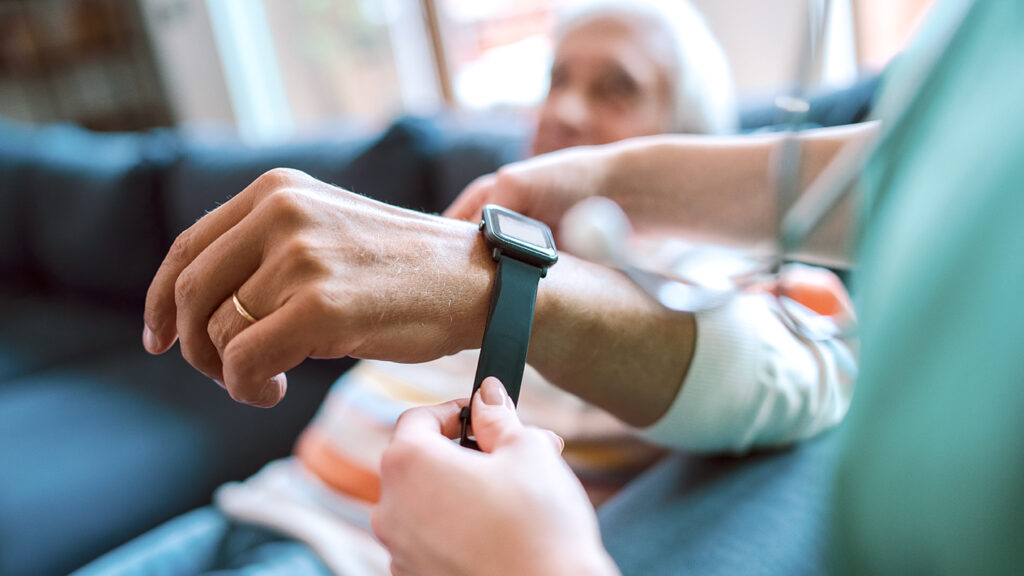
Wearable technology that measures spatial navigation and gait could improve detection of diseases that cause dementia, according to a new study.
Researchers performed two reviews to look at the evidence on measuring navigation and gait, which are two behaviors affected early in people with Alzheimer’s disease and non-Alzheimer’s disorders. The results of their reviews were published in Alzheimer’s & Dementia on March 1. The study also included a framework to evaluate evidence on other factors that could predict disease detection in the future.
“Separately, wearable devices would permit disease detection at a scale beyond that possible with current positron emission tomography (PET) — and cerebrospinal fluid (CSF)–based biomarker tests, which are expensive, invasive and very restricted in their global availability,” the authors wrote. Of course, the devices have to be accurate and comparable to current detection standards, the authors added.
Testing special navigation and gait has a “complementary value for dementia disorders in general” because navigation is subserved by brain regions selectively vulnerable to early Alzheimer’s disease and gait is controlled by brain regions that are affected in people with Alzheimer’s disease and non-Alzheimer’s disorders, the authors said.
Most assessment tools mentioned in the studies, including a navigation tool on a desktop computer with a virtual reality environment, or an assessment of gait using an electronic walkway, weren’t scalable or couldn’t be used remotely on a widespread basis, the authors found.
Two wearable tech tools that stood out were Sea Hero Quest, a smartphone app that looked at numerous factors that could assess navigation, and the Axivity wearable for gait, which is placed on the lower back and collects data on pace, rhythm, variability, asymmetry and postural control.
Newer versions of ergonomic virtual, augmented and mixed-reality devices enable real-world simulating tests that can be scalable and user friendly. Even behavioral assessments are getting a remodel to apps instead of being confined to desktop computers or pen-and-paper formats, the team noted.
There are risks that can come with data-sharing, but the authors said the technologies warrant more research.

